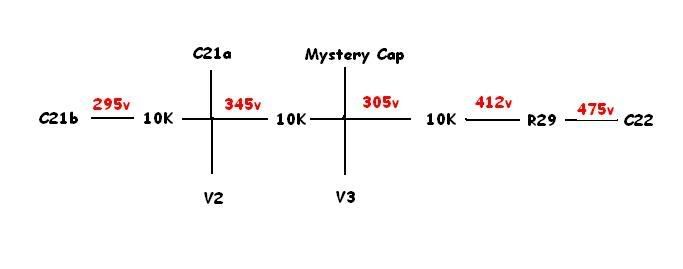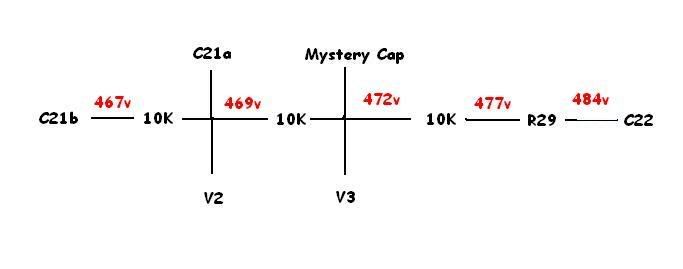Originally posted by stokes
View Post
and as for the fuse that was just extra information I understand what we are trying to find out even if I may not understand exactly how to find it out. I just thought it was odd that that fuse was blown because it was blown before aswell, like even when I could get the amp to come on fine and it seems odd that that would be the case.
 . As I said though "CAP V" does end up back at C22, but also conencts in parallel to the preamp circuit but I'll have to trace out exactly where when I get home.
. As I said though "CAP V" does end up back at C22, but also conencts in parallel to the preamp circuit but I'll have to trace out exactly where when I get home. 

Comment